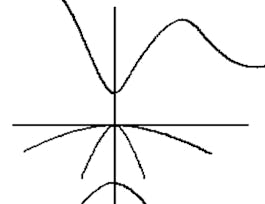This course is a continuation of Electrodynamics: An Introduction and Electrodynamics: Analysis of Electric Fields. Here, we will introduce magnetostatics and relate it to the material we learned previously. In addition, we will cover the basics of the electromotive force and how it can be used to build different devices.



Electrodynamics: Electric and Magnetic Fields
This course is part of Electrodynamics Specialization

Instructor: Seungbum Hong
Sponsored by Louisiana Workforce Commission
14,187 already enrolled
(228 reviews)
Skills you'll gain
Details to know

Add to your LinkedIn profile
5 assignments
See how employees at top companies are mastering in-demand skills

Build your subject-matter expertise
- Learn new concepts from industry experts
- Gain a foundational understanding of a subject or tool
- Develop job-relevant skills with hands-on projects
- Earn a shareable career certificate


Earn a career certificate
Add this credential to your LinkedIn profile, resume, or CV
Share it on social media and in your performance review

There are 5 modules in this course
This module covers the how electrodynamic solutions can be used to find solutions applicable to other fields. We describe how electrodynamics is comparable to heat transfer, membrane physics, neutron diffusion, and other natural phenomenon. Through these comparisons, understanding of other physics can be realized.
What's included
3 videos2 readings1 assignment
This module introduces magnetostatics, and the magnetic field outside of different geometries, and how relativity can be used to understand magnetic forces. To lead into this, we will describe how to characterize current in a wire and while doing this, attention will again be drawn to the similarities between electrostatics and magnetostatics
What's included
2 videos1 reading1 assignment
This lecture introduces the concept of the magnetic vector potential, which is analogous to the electric potential. We explain the distribution of the magnetic potential and how to use it when solving for the electric field. The magnetic dipole is also introduced and the Biot-Savart law is described.
What's included
2 videos1 reading1 assignment
In the first part of this module, we explore the topic of energy and work in the context of electrodynamics. Then we explain the usefulness of the magnetic vector potential (A) and why it is a real field. Finally, we tie these concepts with quantum mechanical electrodynamics, and reveal equations that are useful beyond the scope of statics.
What's included
2 videos1 reading1 assignment
In the final module, we mostly cover the electromotive force, induced currents, and how they may be applied to create devices. We show how forces, electric currents, and magnetism all interact in order to operate machinery.
What's included
3 videos1 reading1 assignment
Instructor

Why people choose Coursera for their career




Learner reviews
228 reviews
- 5 stars
84.64%
- 4 stars
12.28%
- 3 stars
2.63%
- 2 stars
0%
- 1 star
0.43%
Showing 3 of 228
Reviewed on Jun 23, 2020
Very good method of teaching about electrodynamics
Reviewed on Feb 18, 2021
This course is very depply understanding of Electric and Magnetic phenomenon. Also very hard but very useful for research works. I am strongly recommend this course.
Reviewed on May 20, 2020
it is very good to develop skill in electromagnetic theory
Recommended if you're interested in Physical Science and Engineering

University of Colorado System

University of Colorado Boulder

Coursera Instructor Network

The University of Edinburgh

Open new doors with Coursera Plus
Unlimited access to 10,000+ world-class courses, hands-on projects, and job-ready certificate programs - all included in your subscription
Advance your career with an online degree
Earn a degree from world-class universities - 100% online
Join over 3,400 global companies that choose Coursera for Business
Upskill your employees to excel in the digital economy


